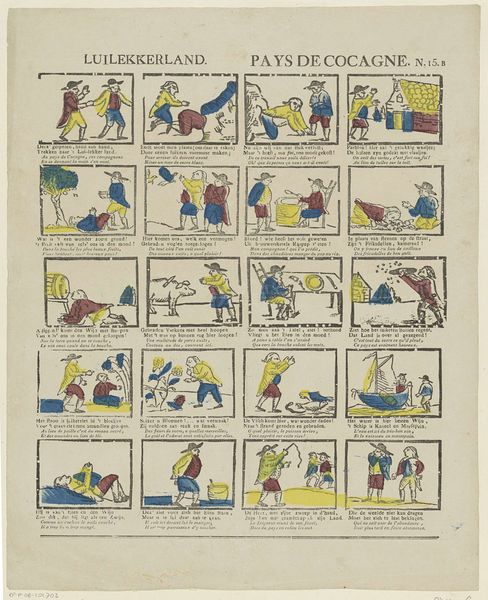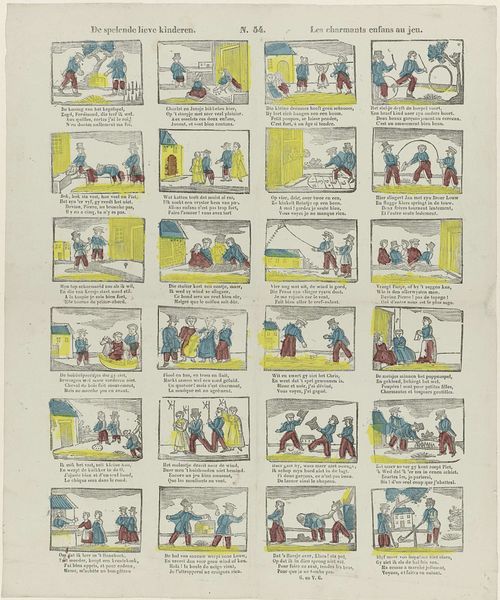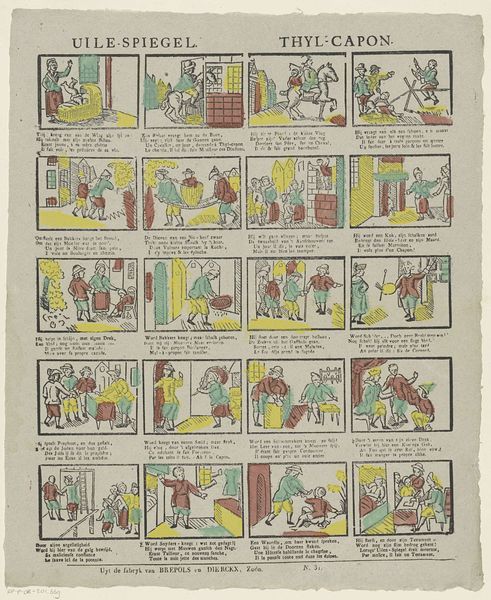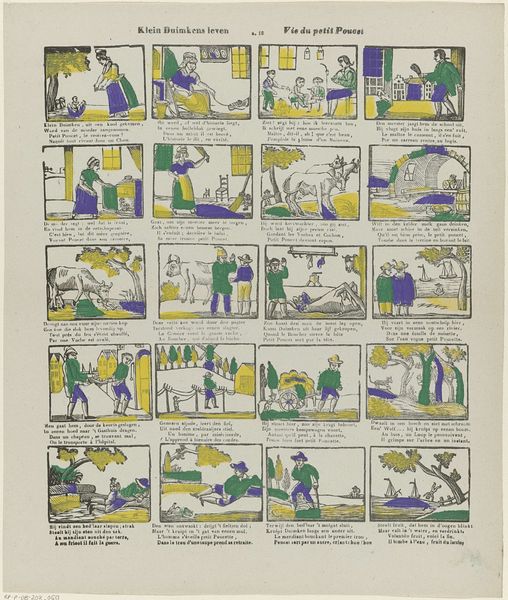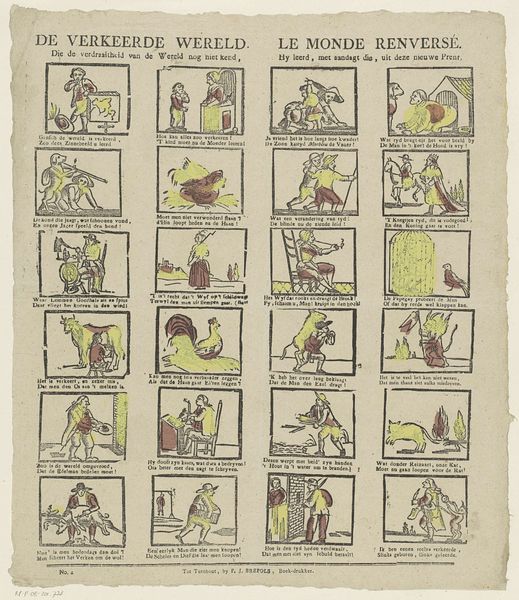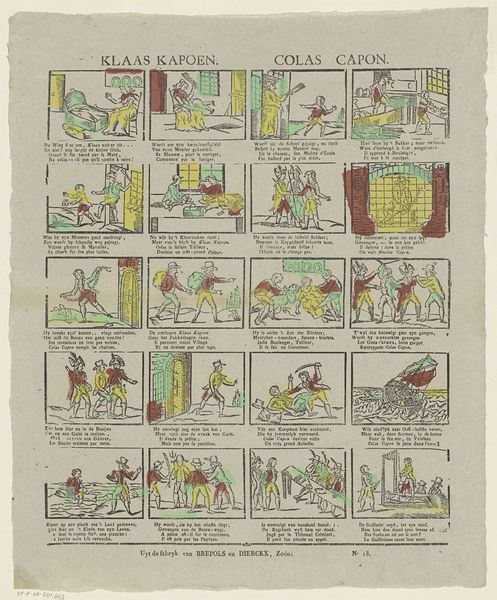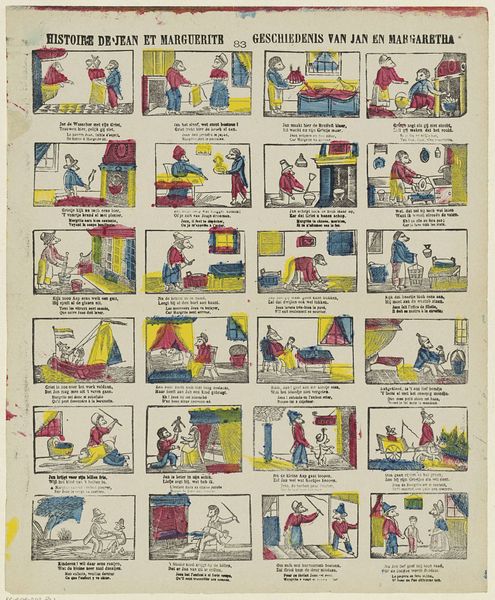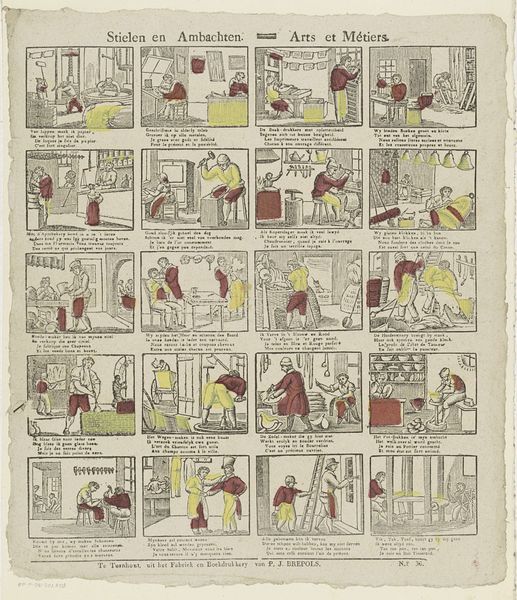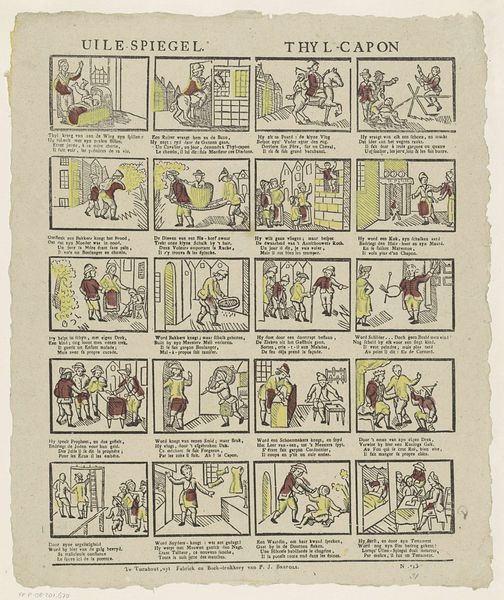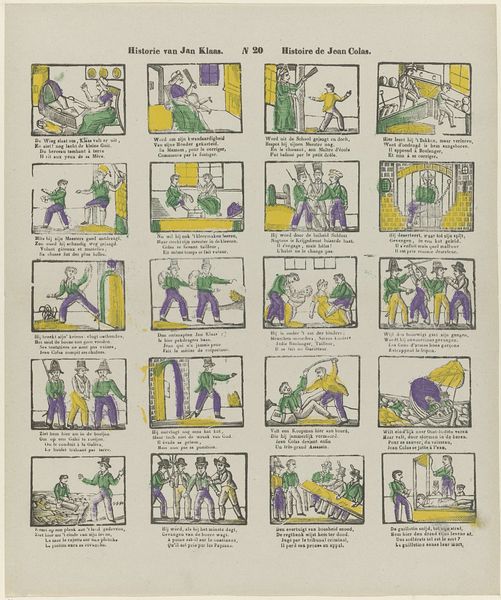
print, etching, woodcut
#
comic strip sketch
#
narrative-art
# print
#
etching
#
caricature
#
old engraving style
#
cartoon sketch
#
personal sketchbook
#
sketchwork
#
ink drawing experimentation
#
folk-art
#
woodcut
#
comic
#
sketchbook drawing
#
genre-painting
#
storyboard and sketchbook work
#
cartoon carciture
#
sketchbook art
Dimensions: height 386 mm, width 320 mm
Copyright: Rijks Museum: Open Domain
Curator: Look at this intriguing print from the Rijksmuseum collection, titled "Lui-lekkerland / Pays de Cocagne," dating roughly from 1833 to 1911, by Brepols & Dierckx zoon. Editor: It’s playful. Each vignette, with its limited colour palette and clear lines, reminds me of old storybooks – simple tales told without a lot of fuss. What catches my attention most is that feeling of being transported back to a world seen through a child’s eyes, where exaggeration and fantasy blend so freely. Curator: Exactly. Notice the choice of etching and woodcut. Both processes speak to accessible printmaking. Think about it: woodcuts especially allowed for the wider circulation of images, potentially democratizing the art form itself. "Lui-lekkerland" taps into folk art traditions. It shows how visual narratives were disseminated among different social classes. Editor: Yes, I feel it deeply in how casually it's composed, as if sprung directly from an eager, whimsical imagination. But in these lighthearted caricatures, there’s an echo of something more. Do you think that the figures who have fallen into fortunate ease mock a social class? Curator: Quite possibly. The term "Lui-lekkerland," referring to a land of idleness and plenty, has social and economic undertones. These images highlight anxieties around labor and consumption. Through caricatures, perhaps Brepols & Dierckx zoon comment on social mobility or even satirize aspirations during industrial change. Editor: Well, what I'm taking away from all of this is a longing for carefree abundance, coupled with an implicit nudge to examine how privilege and prosperity function, whether it is for historical Flemish societies or for the present. Curator: Absolutely. A closer examination brings those tensions to light, enriching a first, perhaps naive, impression with deeper understanding of the relationship between labor, wealth, and societal dynamics.
Comments
No comments
Be the first to comment and join the conversation on the ultimate creative platform.
